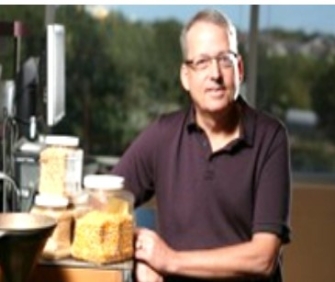
To the NIR Community in memory of Karl Norris
Contribution from Charlie Hurburgh
I am sitting in my home office writing this in the middle of a transformational event that history will surely record as life changing for a long time. The university is struggling with the balance of online teaching versus real people using real equipment to teach practical skills.
That’s where Karl always was…real people teaching about real equipment for real applications. I tried to send my students and staff to IDRC as much as possible, and I am sure many of you know them, either as students or in their ongoing careers, many of them in the NIR field still…Sylvie, Igor, Nancy, Lidia, Benoit, Connie, Glen and so on. Without question the highlight of their trip, really of their graduate programs, was to be able to meet the person that created the technology that they learned, and who was always their first reference in their introduction. And then to have him take the time with each of them to go through their project in some detail (sometimes more detail, or at least better detail than their major professor did!). I am not sure I know of another situation like that, that lasted over as many years as he and they interacted, much more than the typical one-time symposium or reception. The meaning to those students could not be overestimated. Personally, I started in NIR totally as a learn as you go situation, with a filter instrument from Dave Hopkins at DICKEY-john, and a lab manager named Lynn Paynter, whom again some of you know.
We were asked in 1982 by members of the Iowa Soybean Association Board to look into why soybean prices paid by processors in northern Iowa seemed to be significantly lower than prices paid by southern Iowa processors. The guess was oil and protein levels, and enter Dave, the GACIII six filter unit (which still works by the way), and a bunch of samples. Lynn wore herself out doing extractions and Kjeldahls, and we got a calibration that seemed to work well, at least on these samples from NW and SE Iowa. With six filters, and an ISU mainframe fortran computer that had less power than a smartphone calculating all night (crashing sometimes) there were limits… The crunch came next year (1983) with a new crop. I still have the printout of the validation; results were only slightly better than the RANDOM function of the then popular breakthrough spreadsheet LOTUS 1-2-3. Lynn cried for an hour. We had the first DOS-based computer in our department, and I blamed Bill Gates. John Shenk said even a low r square had some predictive value. Dave, as I recall, said I should talk to Karl Norris and not give up. Karl spent more time with us than he probably should have, and probably repeated more of the basics than anyone should have had to. But that was Karl; we left his Beltsville office with several stories and a resolve to try again using his concepts of data-set structuring and in this particular case ratioing the filter values.
That was 36 years ago. I have said thank you Karl ever since. Some events, and some people, you just don’t forget. Best wishes to all, and Godspeed Karl.
Charlie Hurburgh,
Iowa State University





